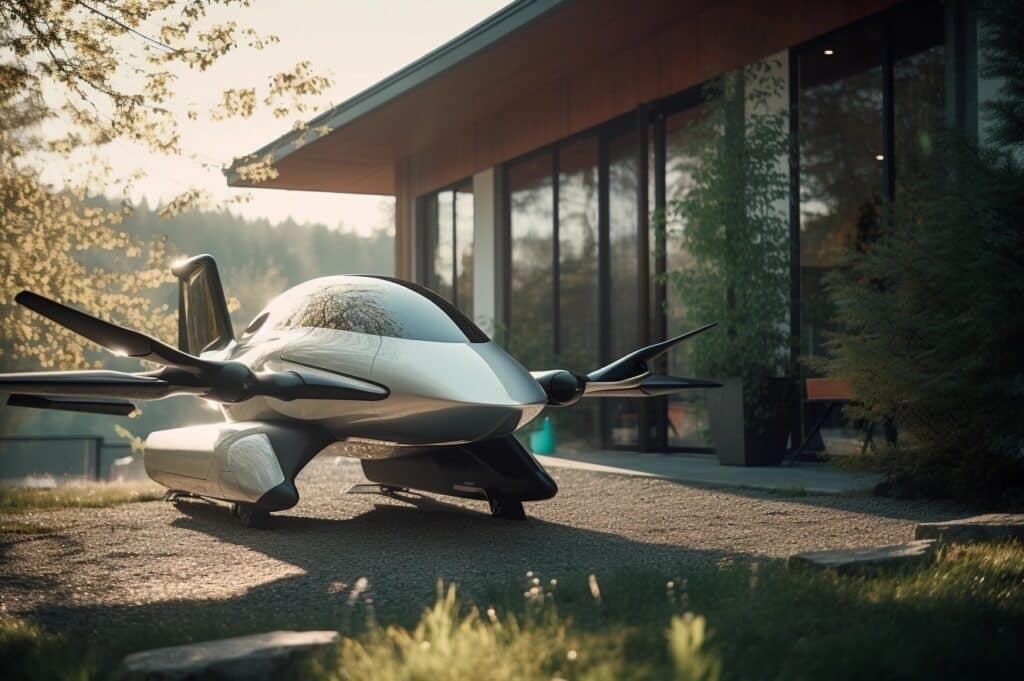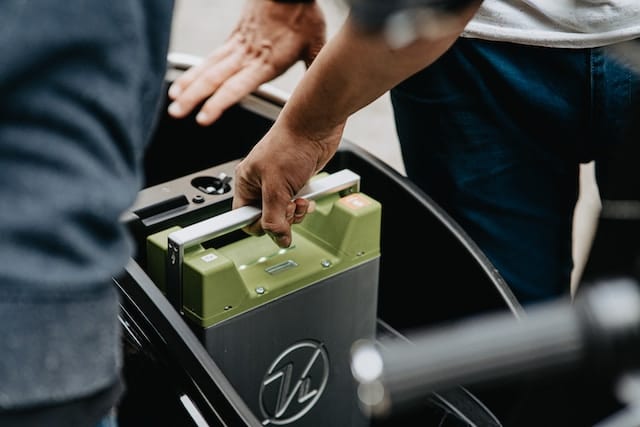Introduction – The Future of Electric Planes And Carbon Reduction
In an era defined by the escalating climate crisis, the burgeoning technology of electric planes offers a glimmer of hope. Emerging in the wake of the electric vehicle revolution, these novel flying machines promise to substantially reduce the carbon footprint of air travel. In a recent article, startups exploring the potential of electric planes have taken center stage, stirring discussions about the feasibility and future of this technology.

The Potential of Electric Planes – 3% Global Emissions
Aviation accounts for about 3% of worldwide greenhouse-gas emissions, a figure that may not seem significant, but the impact is far-reaching. As we advance towards decarbonization, electric planes hold immense potential to mitigate this environmental burden. Powered by batteries instead of jet fuel, these planes could produce nearly 90% less emissions, an impressive leap towards sustainability.
Moreover, batteries shine in terms of efficiency. In an electric plane, about 70% of the energy used to charge up a battery actually powers the plane, a high efficiency rate compared to alternative decarbonization options like hydrogen and synthetic fuel.
Quantifying The 3%
Air travel’s carbon intensity, often measured in terms of grams of carbon dioxide (gCO2) emitted per passenger mile, is a significant factor in the global carbon emissions conversation. For economy class flights, this figure stands at around 222 gCO2 per mile. This might seem high, but when compared to road travel, it’s surprisingly competitive. A car’s carbon intensity, depending on the vehicle’s fuel efficiency and occupancy, is approximately 300 gCO2 per mile.
However, context is key when interpreting these figures. While the per-mile emissions for air travel might be lower than that of a car journey, the longer distances typically covered by planes often result in larger total emissions. For example, a single long-haul flight can contribute significantly to an individual’s carbon footprint due to the sheer distance traveled.
Moreover, it’s important to note that this comparison is largely between conventional, fossil fuel-powered modes of transport. The advent of electric vehicles (and potentially electric planes in the future) promises to drastically lower these numbers, especially as the electricity grid itself becomes cleaner.
In the context of our ongoing climate crisis, these numbers underscore the urgency for continued innovation in sustainable transport technologies. By moving toward electric planes and vehicles, and by sourcing our electricity from renewable sources, we can significantly reduce the carbon intensity of our travel, whether it’s by road or by air.
The comparison of a car ride and a plane flight, both lasting one hour, would vary depending on speed. On average, a car might travel at a speed of around 60 miles per hour, while a commercial jet might fly at around 575 miles per hour. Given this, a one-hour journey for each would look like:
| Quantity | Car | Conventional Plane |
|---|---|---|
| Distance Travelled (miles) | 60 (1 hour trip) | 575 (1 hour trip) |
| Total Carbon Emissions (gCO2) | 18,000 | 127,650 |
This calculation uses the carbon intensity values of 300 gCO2/mile for the car and 222 gCO2/mile for the plane.
From this, we can see that while the per-mile emissions of a car are higher, the much greater distance covered by a plane in the same time period results in significantly higher total emissions for the flight. This highlights the complex relationship between travel mode, distance, time, and carbon emissions, and underscores why air travel is often considered more carbon-intensive overall despite having lower emissions per mile.
Read more about carbon intensity of different travel modes.
The Challenges of Electric Planes
Despite the promise, electric planes are not without their hurdles. The crux of the challenge lies in the battery technology, a critical factor in a field constrained by weight and space considerations. The energy density of today’s batteries falls short of what is needed to power anything beyond the lightest planes for short distances.
Current estimates suggest that the range of electric aircraft is severely limited with existing energy storage technology. This raises questions about the feasibility of electric planes becoming a mainstream reality in the near future.
Startup Efforts to Commercialize Electric Planes
Startups like Heart Aerospace and Wright Electric are making strides to bring electric planes into commercial reality. Heart Aerospace plans to commence flight tests of its 19-seat planes in 2024, with commercial flights envisaged by 2026. Wright Electric, aiming for larger planes, also plans to take to the skies by 2026.
These startups are focusing initially on niche markets, where ground transport alternatives are less viable. However, these ambitious plans are met with skepticism. Industry experts, such as Jayant Mukhopadhaya of the International Council on Clean Transportation (ICCT), caution that the battery technology required for such plans is simply not there yet.
The Future of Electric Planes and Battery Technology
Ultimately, the fate of electric planes is inextricably linked to the future of battery technology. For electric planes to become a practical reality, the energy density of batteries would need to significantly improve. This could necessitate the development and commercialization of novel types of batteries.
Simultaneously, other technologies such as alternative fuels and green hydrogen, which boast higher energy densities, are emerging as likely contenders for longer flights, provided they can be produced economically at scale.

The Role of Electric Planes in Sustainable Air Travel
Even with their current limitations, electric planes can play a vital role in fostering more sustainable air travel. Government subsidies and niche markets could serve as stepping stones in the early stages of electric flight. Ultimately, the adoption of electric planes underscores the larger goal: transitioning to zero-waste practices and sustainable air travel.
Conclusion – The Future of Electric Planes
Electric planes, promising as they may be, still have a long journey ahead. The onus lies heavily on battery technology improvements. Yet, as we navigate the complexities of this technology, we inch ever closer towards our destination: a future of cleaner, more sustainable air travel. The dream of electric planes represents more than just innovation; it’s our commitment to protecting the planet for generations to come.

Anne Lauer
Anna Lauer is a writer, gardener, and homesteader living in rural Wisconsin. She has written for Mother Earth News, Grit, and Hobby Farms magazines. Anna is writing a new book about growing your food for free and an ultimate guide to producing food at little to no cost. When she’s not writing or gardening, Anna enjoys spending time with her husband and two young daughters.
